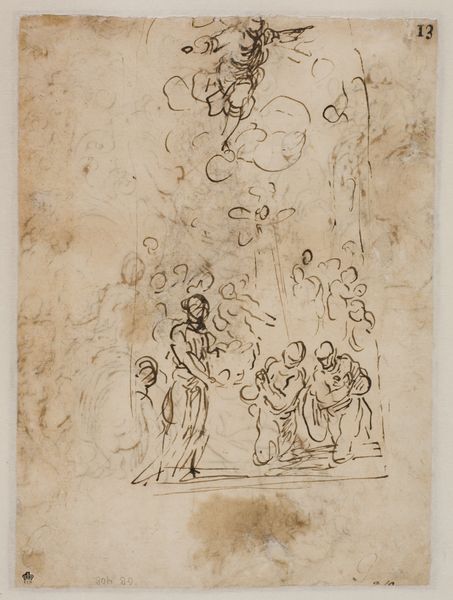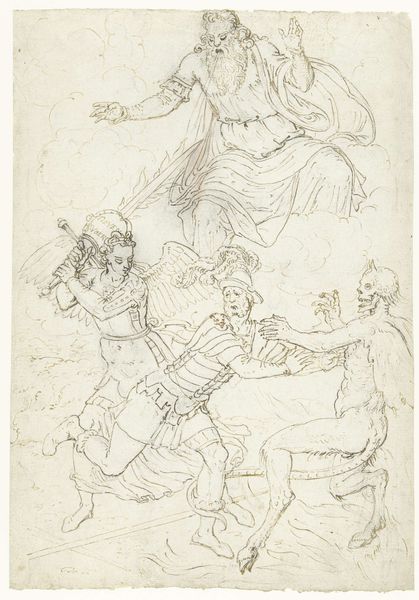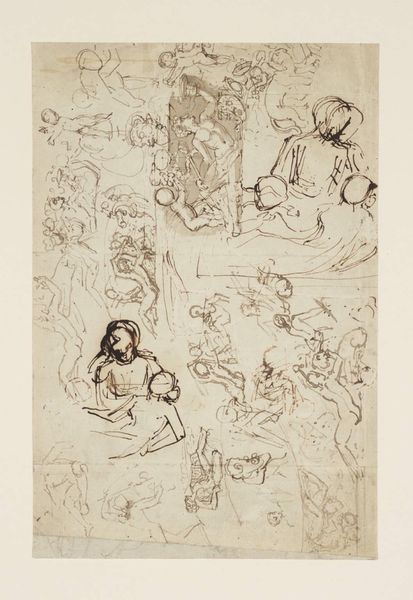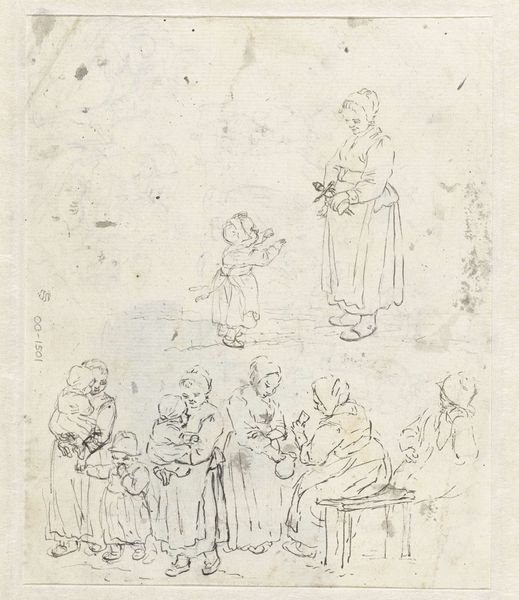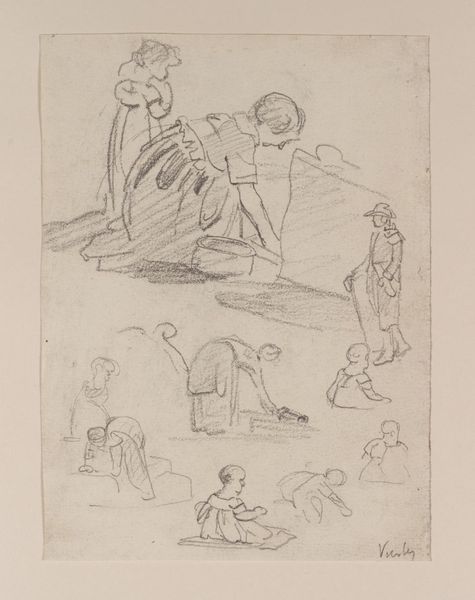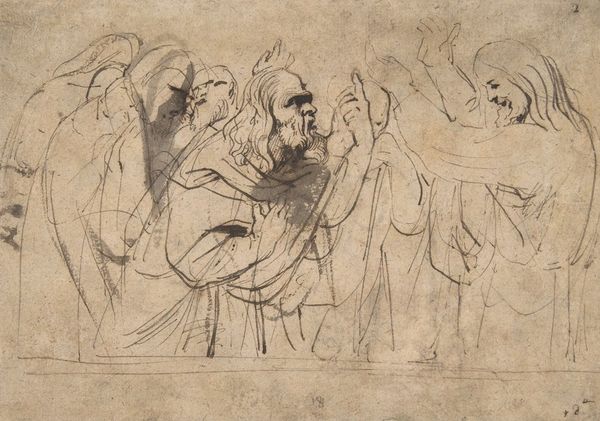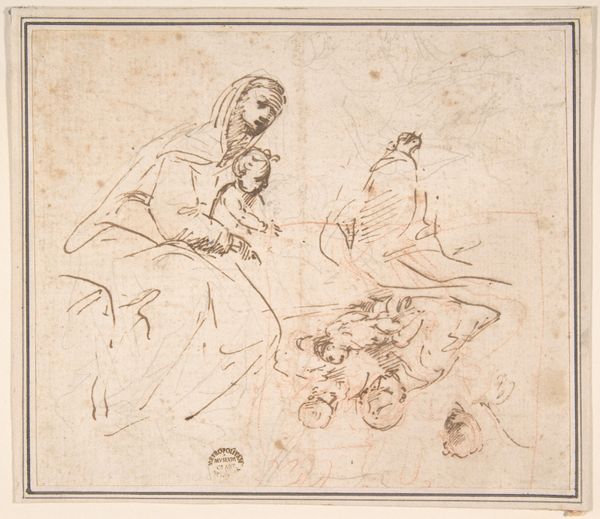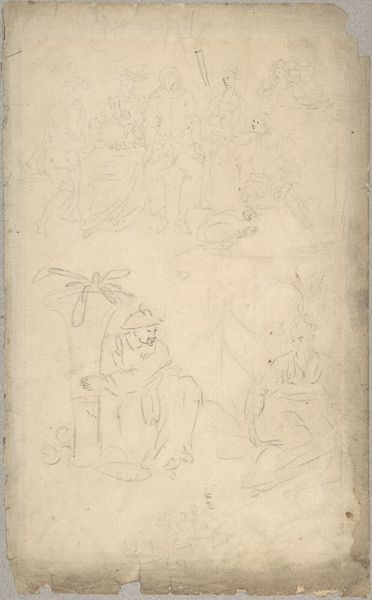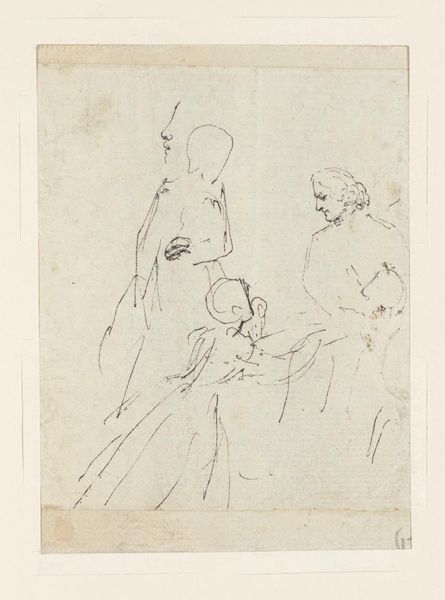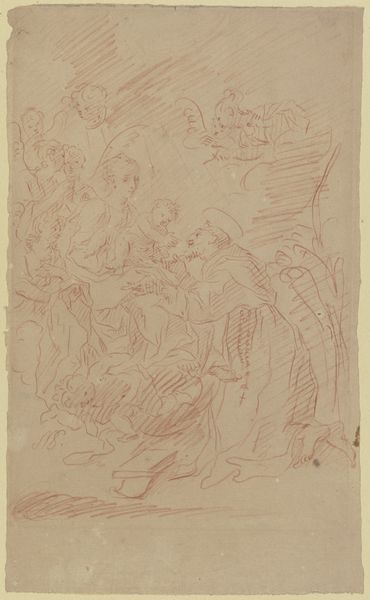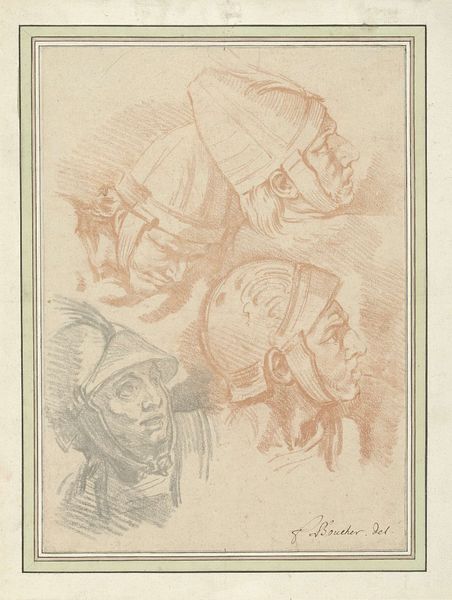
drawing, paper, pencil
#
portrait
#
drawing
#
caricature
#
figuration
#
paper
#
form
#
pencil
#
line
#
realism
Dimensions: height 303 mm, width 214 mm
Copyright: Rijks Museum: Open Domain
Editor: Here we have "Karikaturen," made sometime in the 19th century, by an anonymous artist. It's a pencil drawing on paper, held in the Rijksmuseum. They’re pretty harsh depictions, and what strikes me is how exaggerated each face is, almost grotesque. What can you tell me about what we're seeing here? Curator: Notice how each of these faces, while unique, shares certain symbolic features--the downturned mouths, the prominent noses, the way the eyes seem to be perpetually judging. In caricature, physical traits aren't just magnified; they become shorthand for character flaws, for social anxieties. Do you see any repeating shapes or lines that seem to communicate a particular message about these individuals? Editor: I see lots of long, hooked noses. Is that just a funny nose, or something else? Curator: Exactly. Noses, throughout art history, are heavily laden with symbolic meaning. Think about Pinocchio and the ever-growing nose that signifies a deceitful nature! Here, an exaggerated nose might signal stubbornness, perhaps even arrogance, depending on the cultural context. Think about what that meant for 19th century Dutch society. What sort of types were being mocked, and why? Editor: So it's more than just a funny picture; it's commenting on people. Is there something almost cruel about that, though? Curator: Perhaps, but cruelty often holds a mirror to societal flaws. Consider: Does humor lessen or intensify a prejudice? Caricature reminds us of the power of images to define, to categorize, and, sometimes, to wound. But also the capacity to heal... because who isn’t the butt of a joke once in a while? Editor: That gives me a lot to think about. I came in seeing funny faces but now I’m seeing something way deeper. Curator: Indeed. The surface is but a doorway.
Comments
No comments
Be the first to comment and join the conversation on the ultimate creative platform.
